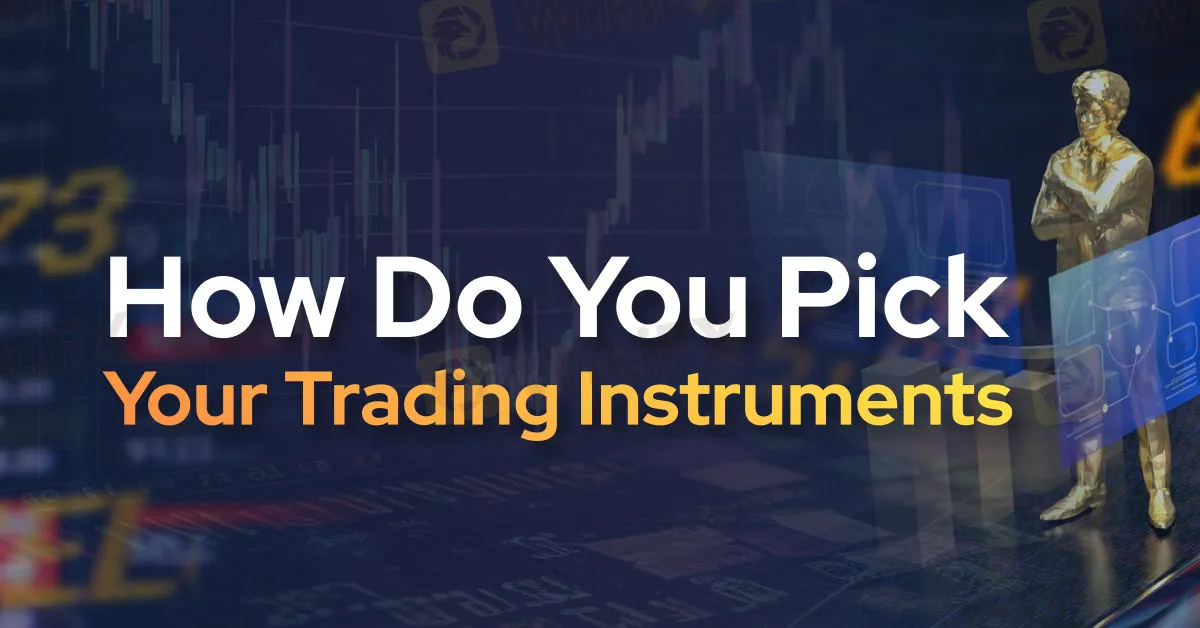简体中文
繁體中文
English
Pусский
日本語
ภาษาไทย
Tiếng Việt
Bahasa Indonesia
Español
हिन्दी
Filippiiniläinen
Français
Deutsch
Português
Türkçe
한국어
العربية
How to Pick Your Trading Instrument
Abstract:Choosing the right trading instrument is crucial for success in the dynamic world of forex and cryptocurrency trading. With a myriad of options available, from currency pairs to cryptocurrencies, it can be overwhelming for traders to make the best choice. In this article, we will discuss key factors to consider when selecting your trading instrument, empowering you to make informed decisions and maximize your trading potential.

Before diving into the world of trading, it is essential to assess your risk appetite. Different trading instruments come with varying levels of risk, and understanding your tolerance for risk is paramount. For example, currency pairs in the forex market tend to have lower volatility compared to cryptocurrencies, making them a suitable choice for traders with a lower risk tolerance. On the other hand, cryptocurrencies can offer higher potential returns but also come with increased volatility and risk. By evaluating your risk appetite, you can choose a trading instrument that aligns with your financial goals and comfort level.

Another crucial factor to consider when picking your trading instrument is market liquidity. Liquidity refers to the ease with which an asset can be bought or sold without significantly impacting its price. Highly liquid markets offer tight bid-ask spreads and ample trading volume, providing traders with better opportunities for execution and minimizing the risk of slippage. Currency pairs such as EUR/USD and GBP/USD are known for their high liquidity, making them popular choices among forex traders. Similarly, cryptocurrencies with high trading volumes, such as Bitcoin and Ethereum, offer ample liquidity for traders. Prioritizing instruments with sufficient liquidity can enhance your trading experience and reduce trading costs.
Different trading instruments operate within specific trading hours, influenced by their respective markets' opening and closing times. It's essential to consider your availability and preferred trading times when selecting your trading instrument. For instance, forex markets operate 24 hours a day, five days a week, offering flexibility for traders to trade at their convenience. Cryptocurrency markets, on the other hand, are open 24/7, allowing traders to access opportunities round the clock. By aligning your trading instrument with your schedule, you can optimize your trading strategy and capitalize on market movements when you're most active.
Fundamental analysis plays a crucial role in trading, particularly in the forex market. When selecting a currency pair to trade, it is crucial to assess the underlying fundamental factors driving their prices. Factors such as economic indicators, central bank policies, geopolitical events, and market sentiment can significantly impact currency prices. Similarly, in the cryptocurrency market, factors such as adoption rates, technological developments, regulatory news, and market sentiment influence cryptocurrency prices. By staying informed about fundamental factors relevant to your chosen trading instrument, you can make informed trading decisions and anticipate market movements.
In addition to fundamental analysis, technical analysis is another valuable tool for traders to analyse price trends and identify potential trading opportunities. Technical indicators such as moving averages, RSI, MACD, and Fibonacci retracements can help traders analyse price charts and identify entry and exit points. Whether you're trading currencies or cryptocurrencies, incorporating technical analysis into your trading strategy can enhance your decision-making process and improve your trading results.
Picking the right trading instrument is a critical decision that can significantly impact your trading success. By assessing your risk appetite, analysing market liquidity, considering trading hours, evaluating fundamental factors, and utilizing technical analysis, you can make informed decisions and select a trading instrument that aligns with your trading goals and preferences. Remember, thorough research and continuous learning are essential for navigating the complex world of trading and achieving long-term success.

Disclaimer:
The views in this article only represent the author's personal views, and do not constitute investment advice on this platform. This platform does not guarantee the accuracy, completeness and timeliness of the information in the article, and will not be liable for any loss caused by the use of or reliance on the information in the article.
Read more

Crypto Scam Advertised on Facebook Costs an E-Hailing Driver RM147,600
A 65-year-old e-hailing driver in Malaysia has lost RM147,604 to a fraudulent cryptocurrency stock scheme that was advertised on Facebook.

Why Is OKX Crypto Exchange Under EU Probe After Bybit $1.5B Heist?
Why is OKX crypto exchange probed by EU after Bybit’s $1.5B heist? Explore MiCA’s role, OKX’s Web3 service, and crypto security challenges.

Coinbase Launches 24/7 Bitcoin and Ethereum Futures Trading
Coinbase introduces 24/7 Bitcoin and Ethereum futures trading for U.S. traders, offering perpetual futures contracts with CFTC approval.

What Impact on the Forex Market as Former Philippine President Rodrigo Duterte is Arrested.
The sudden arrest of former Philippine President Rodrigo Duterte on an International Criminal Court (ICC) warrant has sent shockwaves through global markets and regional investors alike. While Duterte’s arrest is being hailed by human rights groups as a decisive step toward accountability for his controversial “war on drugs,” it also raises significant questions about factors that can strongly influence the forex market.
WikiFX Broker
Latest News
Beware: Online Share Buying Scam Costs 2,791,780 PHP in Losses
5 things I wish someone could have told me before I chose a forex broker
Unmasking a RM24 Million Forex Scam in Malaysia
U.S., Germany, and Finland Shut Down Garantex Over Money Laundering Allegations
Gold Prices Fluctuate: What Really Determines Their Value?
Dollar Under Fire—Is More Decline Ahead?
What Impact on Investors as Oil Prices Decline?
Plunging Oil Prices Spark Market Fears
Celebrate Ramadan 2025 with WelTrade & YAMarkets
WikiFX App Version 3.6.4 Release Announcement
Currency Calculator






